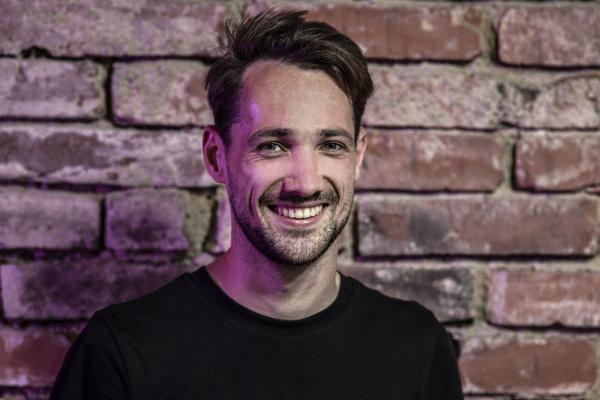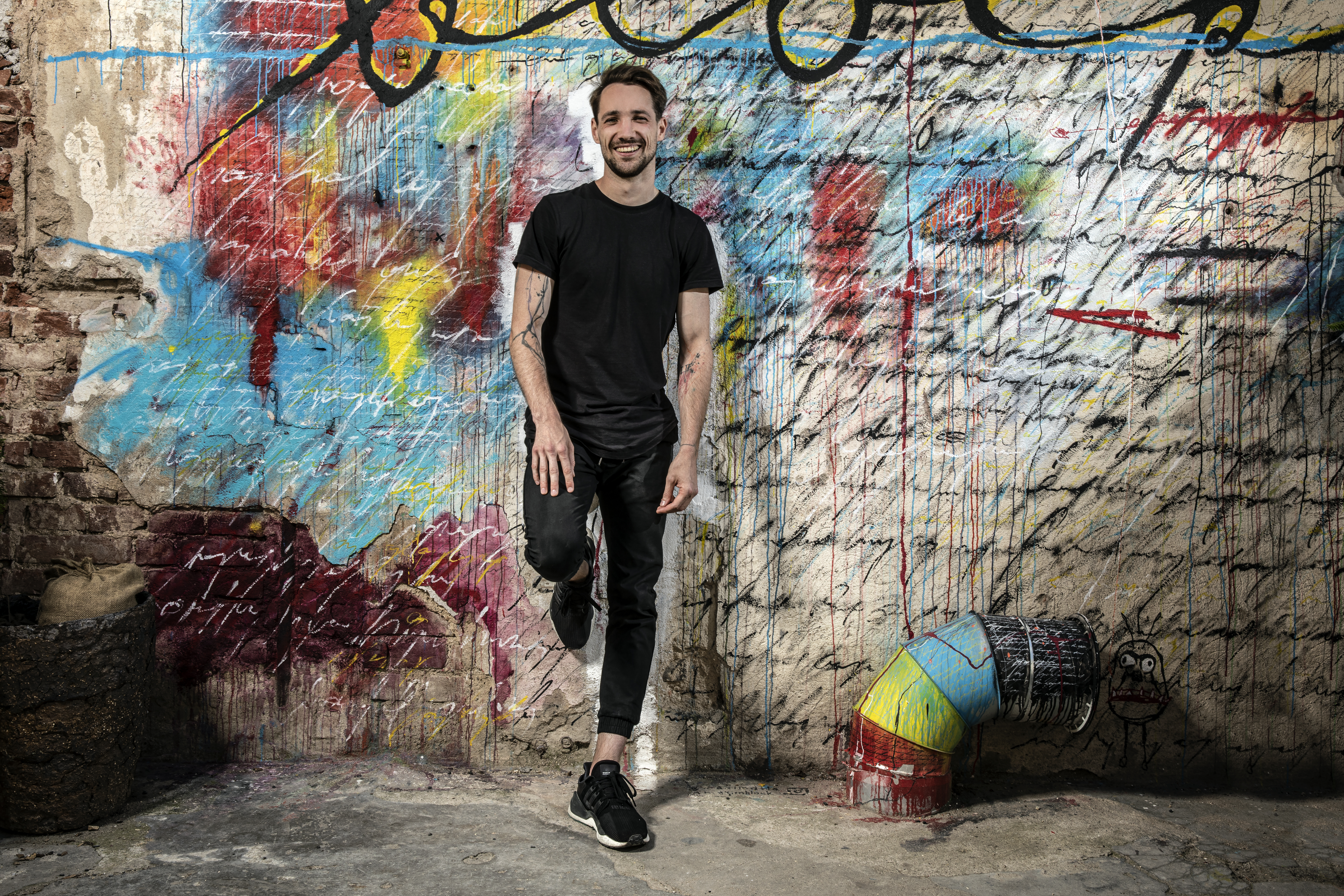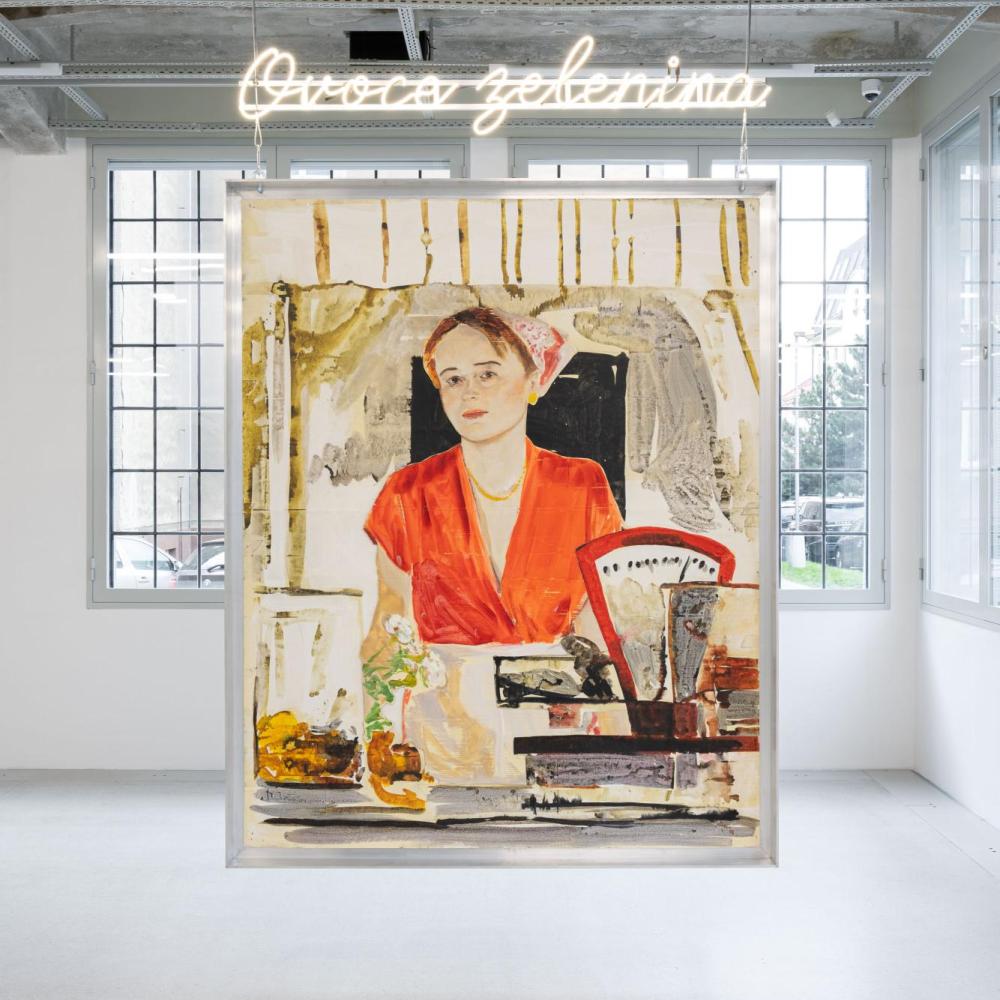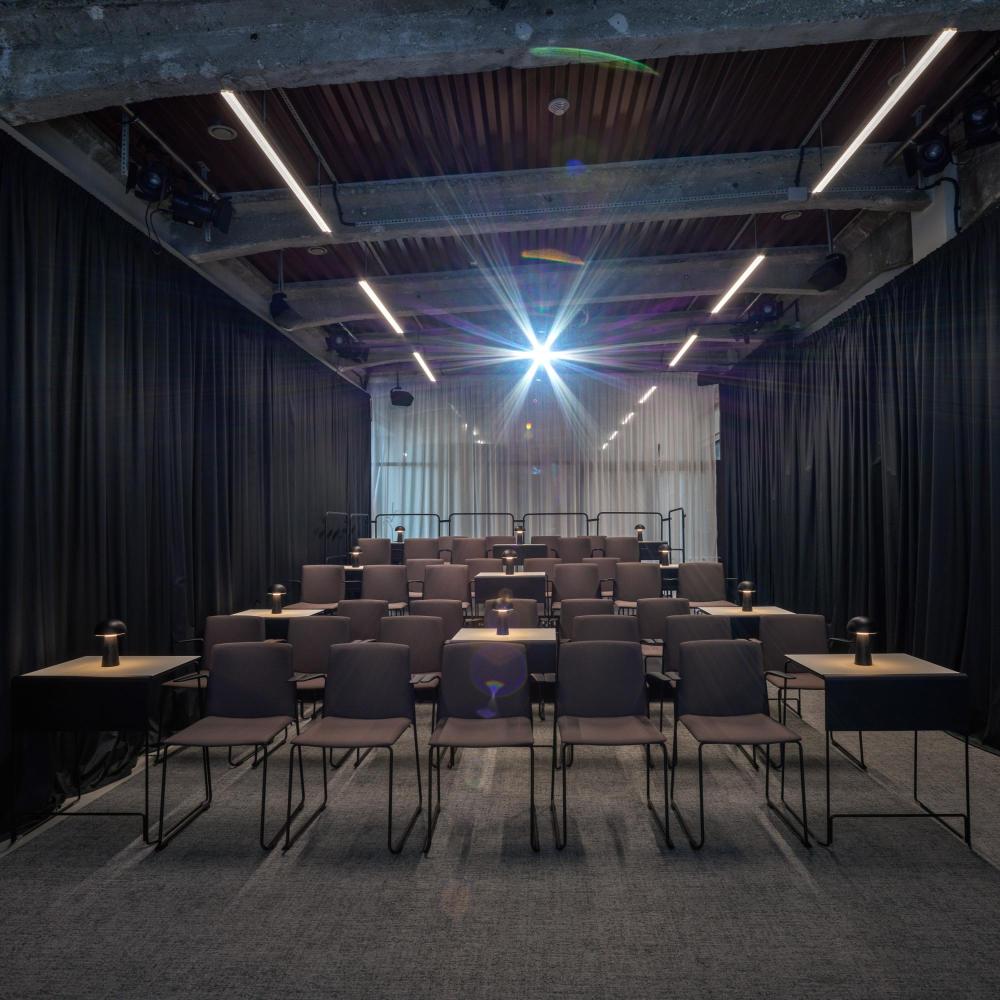
Every industry needs promotion, even the creative ones. That's why we decided to reach out to industry experts who know how to sell not only their works, but also themselves. At the Telegraph cinema event, Promotion in the creative industries will be debating painter Lucie Jindrák Skřivánková, designer Anna Leschinger and curator Vojtěch Fiala, who we interviewed. The event will take place on 20 1 at 18:00.
How did you get into curating at D&B Gallery?
Rather than an academic path, it was my own enthusiasm, a touch of chance and, paradoxically, my barista career, which I developed during my time at VŠE, that led me to it, as it had been clear for some time that I didn't want to sit in a bank. I had been interested in art for a long time, but instead of becoming an artist, I was more attracted to the organizational aspect of exhibitions - despite a few artistic attempts, I eventually decided that there were much more skilled painters and drawers around me than I was and that I wanted to help them on their way. Not long before graduating, I started working at the then newly opened Café looking for a name in Smichov. Even then, there were several paintings hanging there and countless pop-up cultural events taking place. So I had a meeting with the owners and presented my vision that we could continuously organize exhibitions in the space and create an unconventional gallery connected with gastronomy. Which ended up working quite nicely. After half a year we opened a much bigger space in Holešovice called Vnitroblock, where we decided to dedicate part of the space to art. And it was off and running.
What is your key to choosing artists?
Very intuitive. The fact that I don't have an academic art background can certainly be seen as a negative, but I see it more as an opportunity to shape my own path unencumbered by too much emphasis on formalities, whether it's the artist's education or exhibition history. I like to work with established artists, but I also have a great affection for self-made artists - after all, we are from the same tribe 😊. First impressions are definitely very important to me. When art resonates with me, usually the first second I see it in my head is "That's awesome!". And the train is already moving. I believe that a curatorial essay can be written about pretty much anything, but that first spark, it has to be there. What's absolutely crucial in the next step is the mutual energy with the artist. Without it, it's impossible to make an exhibition one hundred percent, even if I talk myself into it. That's the biggest drive.
Does the specific exhibition space of Cafe Looking for a Name and Inner Block play a role in your projects?
Sure. Rather than a gallery, I present our space as a unique site-specific environment where art can be presented in a slightly different context and to a slightly different audience. In both spaces, also because of the spatial possibilities, I focus mainly on painting. The café looking for a name is more intimate and lends itself to more academic work. On the other hand, Innerblock is more suited by its nature to more decorative, pleasing art.
You also hold events outside the D&B Gallery space. For example, at OD Kotva you managed to organize a spectacular project in collaboration with the Czech-American artist MAXIM. How did the collaboration go?
I knew a little bit about MAXIM's brother, the successful music composer Karel Havlíček, who one day told me about MAXIM, who lives and works in L.A. and who wanted to organize his first European exhibition. Without realizing at the time, as a total novice, what I was getting into, I blurted out "Well, let's do it!" And we started six months of intensive work. To this day, I consider that experience to be the highlight of my career. Both Kája and MAXIM are extremely inspiring, world-class personalities and their relentless drive has constantly propelled me forward. I dare say it was one of the biggest exhibitions ever in Prague that year, with something close to a thousand people coming to the opening. At that time, we and the team all came together and worked hard on our common vision, which the guys infected us with. I'm really grateful for that experience and it still gives me chills.
You recently opened an exhibition of an artist with the pseudonym Openmindz360° at the House of Art in Opava. What attracted you to his work and how did you approach this project?
The exhibition with Mark Nenutil (Openmindz360°) at the House of Arts in Opava was another milestone for me. Not only was it my first exhibition in a respected institution of national importance, it is also my most extensive exhibition, as it was Mark's first retrospective exhibition of over 100 works. Mark and I have known each other for several years and have had 2 exhibitions in both of our spaces. What I enjoy most about him is the variety of subject matter that rotates with great cadence, as well as his signature distinctive color palette and the almost pulsating energy that radiates from his work. Marek himself invited me to this project and I am very grateful to him for his trust. At the same time, two more exhibitions are taking place in the gallery, by Patrik Habel and Michal Škapa. It is an honour for me to be in the company of these three great names.
Are personal relationships with artists important to you?
Absolutely. In fact, that's the main reason I do it. I see art as a specific kind of language that people can use to describe our world and communicate with each other at the same time. I always like to look for a specific personality behind each work of art, its energy, character and story, which then makes me see the art itself in a completely different context than if I were to focus on the actual product of their work. At the same time, art has the power to create opportunities for encounters, mutual inspiration and building new relationships. And that's what I enjoy about it.
I know you're a bit of an art collector too. What pieces of art do you have in particular in your home and which is your favorite?
Sort of. Not in the sense that I'm building a comprehensive collection, but more in the sense that they reflect my personal experience with the artists, which is the alpha and omega of my relationship with their work. So these are mainly people I've worked with. I probably can't name all of them, but I have the above-mentioned MAXIM and Openmindz360°, Patrik Kriššák, Klára Sedlo, Filip Kůrka, iamRushdog, James Cole, Dereck Hard, Lukáš Havrda or Dávid Kurňavka hanging in my house. I also have my eye on something smaller by Ivana Bachová, her realistic water paintings have a beneficial effect on me.
Curating isn't the only activity you do. What are your other work experiences and what have they given you?
Yes, there are heaps of them, until for a while I thought there was something wrong with me, that I couldn't choose one path. But with hindsight, everything always falls into place. A career as a barista has helped me to open up more to communicating with people and reinforcing my respect for the craft. Studying at the College of Education, in turn, helped me build my analytical mindset and be structured and organized. Organising the Café Live festival has brought me closer to culture again. I have also worked as a project manager in a creative agency, where you need to combine a bit of everything - organisation, creativity, communication, teamwork.
You are currently working as a project manager on the Sport in Art project. What do you expect from this position and what could be your contribution?
This is an emerging platform that aims to support the creation, promotion and sale of art inspired by the world of movement. Although sport and art are two worlds apart at first glance, in reality it is exactly the opposite. Consider, for example, antiquity, the cradle of European culture and also the principle of kalokagathia, the cultivation of physical and mental beauty. The best example is Discobolos. In history, then, sport appears in a number of important authors. And we have found that there is no platform globally that deals with this segment of art. So the ambition is big and if it works, we will be able to create a project of international importance. I can bring to it my passion for both art and sport, as well as my experience in project management and maybe even a little bit of curating, it remains to be seen.
Vojtěch Fiala is the founder and curator of Dudes&Barbies Gallery, which creates exhibition content for the Vnitroblock multifunctional centre and the Café looking for a name. He also works as a freelance curator. One of his most extensive events was an exhibition of Czech-American painter MAXIM, which took place in 2018 in the Kotva shopping centre. In addition, he has had management experience in a creative agency and now works as a project manager for the newly emerging international project Sport in Art.
By Mira Macík / Telegraph Gallery
Photo: Dereck Hard








